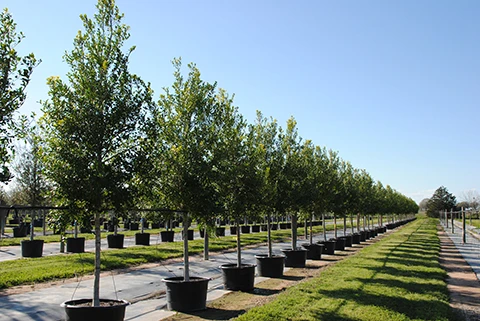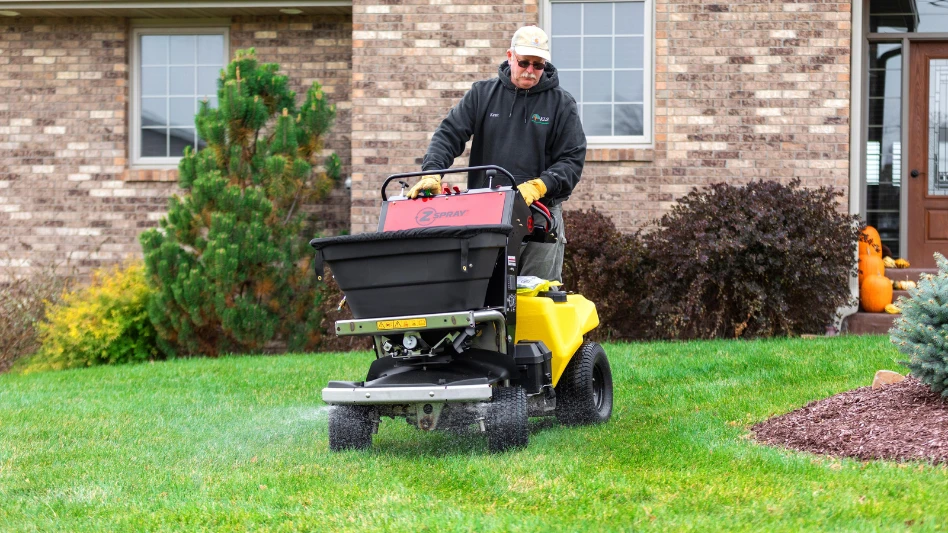
 |
While business may be picking up for landscaping companies across the country, some may hit a bit of an obstacle when deciding what plants to include in a project. A nationwide tree shortage has hit the industry, and it doesn’t look like it will end anytime in the near future.
“Tree shortages (mainly in the 2-2.5-inch caliber range) that are appearing right now are just the leading edge of a much more severe, widespread shortage of desirable trees that will be needed for landscape construction projects throughout the country, says Nancy Buley, director of communications for J Frank Schmidt & Son Co. in Boring, Ore.
Trees can take anywhere from 5-10 years to propagate. When nurseries closed their doors during the Great Recession that mean fewer trees were being propagated to hit the market right now.
“Oregon nurseries propagate a large percentage of the nation’s shade trees, and everyone suffered significant decreases in their annual sales,” Buley says. “Some major tree nurseries in Oregon and other propagation centers went out of business, leaving fewer propagators in the business.”
Kevin Finley, general manager of Mariani Nurseries in Wisconsin, said you won’t see nearly as much of a shortage in container and perennial plants because those don’t take as long to propagate.
"That inventory, you can evaluate it and respond to demand a little quicker,” Finley says. “There’s not quite the build-up of inventory. But with trees, when things were really, really strong I think a lot of growers were having a hard time meeting demand; there was a big buildup of field stock – shade trees, that type of thing.
That left an abundance of trees with nowhere to put them, which meant nurseries were losing money on them. That access inventory is now gone and Buley says Schmidt is expecting eight years of shortages.
“It’s going to take years for our nursery customers to recover from the recession,” she says. “Even though the nursery economy appears to be steadily improving, growers won’t be able to afford to ramp up production right away. Many will have to spend money gained from improved sales on deferred capital improvements, equipment purchase, wage increases.”
Buley adds that it’s not only the recession that caused the shortage, but also the havoc wreaked by the Emerald Ash Borer, Asian Longhorn Beetle, diseases and natural disasters and droughts that have hit the country.
“They’re still mopping up after Hurricane Sandy, but eventually the trees that were lost will have to be replanted,” she says.
What now? So what does this tree shortage mean for landscapers? For one, you’ll have to be more careful about what trees you place in a bid, which is a change from years past, Finley says.
“The pendulum swung so dramatically from two years ago when they would bid jobs and they wouldn’t even think where they could get the product because the product was so plentiful,” he says.
Buley said contractors shouldn’t assume the trees they want will be available at the bargain they bought it at last year. She also said contractors should be willing to expand the distances they travel for trees, be prepared to place deposits to hold trees for future delivery and align with quality nurseries and listen to their advice on upcoming availability and site-appropriate substitutions.
“Send your want-lists to nurseries as early in the design process as possible – give them a heads-up as to the varieties and quantities you anticipate needing in the future,” Buley says.
“Landscape architects can no longer assume that the trees they draw on their plans will be out there for the contractor to find. They’ll need to make sure the trees exist before they specify.”
Latest from Lawn & Landscape
- PERC helps debut propane direct-injection fuel system at ACT Expo 2025
- Retargeting Ads – A Secret Weapon for Growing Your Lawn Care Business
- Leading a growing company
- Project EverGreen launches Clean Air Calculator
- Rain Bird acquires smart lawn care company OtO from Toronto
- PBI-Gordon names Marvin as VP of research and development
- Mean Green rolls out Vanquish Autonomous mower
- Focal Pointe launches new podcast series





